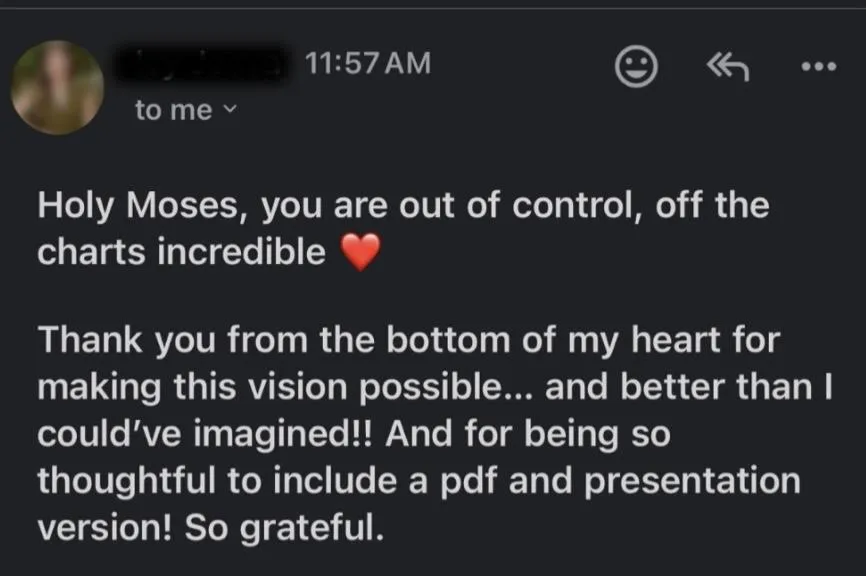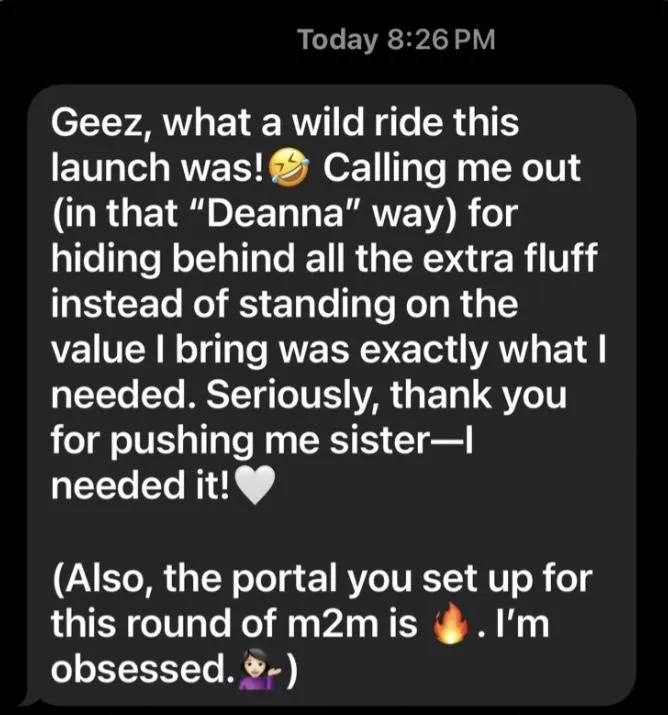Free 4-Part Video Series: Build your conscious funnel with ChatGPT → Sign Up Here

I help soul-led coaches, healers, visionary leaders, and solopreneurs find clarity—both in their businesses and their inner lives.
Civic Access Collective is built for people navigating the realities behind the rules—those facing Medicaid work requirements, managing poverty, reentering after incarceration, living with disability, or caregiving without support. It’s also for the caseworkers, nonprofits, and agencies searching for real options they can point people to. And it’s for anyone who believes civic participation should be accessible, humane, and rooted in dignity—not bureaucracy.
A free collection of templates, guides, and systems I’ve created to bring more ease and flow to the behind-the-scenes of conscious business.
From content checklists to launch plans to AI-powered workflows, each resource is designed to support you in working smarter—without losing your voice or your values.
A gentle, clarity-bringing worksheet to help you check in with the systems holding your business together (or…not quite).
It’s a spacious, reflective tool designed to help you notice where things feel aligned—and where your business might be asking for something softer, simpler, or more sustainable.
Your gifts are powerful.The way you naturally create, connect, and guide is not an accident — it's an archetype.
This quiz will help you uncover your creative leadership style so you can build offers that feel true to your soul.
For the solo service providers, coaches, guides, and creatives who are asking better questions… and trusting deeper answers.
Every week, I share reflections, frameworks, and gentle disrupts. It’s unpolished sometimes. Rooted, always. And written for the ones who know they’re not here to build the loudest business—just the most honest one.
I’ve taken the practices that have worked best for me and brought them together into a resource designed to support you through the ups and downs of life.
Inside you will find prompts to help you identify and understand what’s truly stressing you out. These are practices I’ve personally used to create more calm and clarity when life feels overwhelming.
Click here to book a call with me to learn more about working with me and how my unique gifts can support your mission and goals.
The Conscious Systems Method
My signature framework for running your business with more clarity and less chaos. This method helps you simplify what’s not working, strengthen what is, and build systems that actually support your energy.
I guide conscious leaders through two complementary paths:
Strategic Alignment & Systems for Growing a Business with Ease, Sustainability, and Integrity
Restorative Energetic Support to Move Through Exhaustion and Burnout with Depth and Compassion
You don’t have to choose one or the other. My work creates space for both: structure and spaciousness, strategy and stillness.
ABOUT
Hey, I'm Deanna!
I bring 14+ years of operational strategy, tech, and launch experience working with healing and wellness brands. I’ve led operations, tech, and launches for top healing and wellness brands—supporting $2M–$25M+ in revenue across global orgs, digital platforms, and an Inc. 5000 coaching company.
At the same time, I hold space for transformational experiences that restore balance and emotional clarity.
Why These Are One Medicine?
I don’t believe your inner life and outer work can be separated. Both need care. Both need holding. When you feel held in your body and your business, the expansion that follows is steadier and more aligned.

Free Video Series: Build Your Conscious Funnel Blueprint
Learn how to map an offer-aligned, energetically sustainable funnel that supports real connection and consistent clients—without the burnout or bro-marketing.
MY Approch
You’re here because you’re ready to do more than just survive—you’re ready to feel seen, held, and aligned in both your work and your soul. You might be running a business that is working, but you feel stretched thin and disconnected. Or you might have grown so used to just surviving the day-to-day that you barely recognize the person who started this journey. You’ve held so much—grief, burnout, stress, disconnection from your gifts.
And if you’re honest, you’re craving two things: clarity and restoration.
That’s why I bring deep, grounded strategy and alignment for your business—so you can grow without sacrificing your values or well-being AND a heart-and-body‑centered space to feel again, to process what’s been left unspoken, and to reconnect to your own wholeness.
Why this matters:When your soul feels attended to, your work expands. When your business runs with ease, your inner world opens. They don’t live in separate boxes—they are the same ecosystem.
The Conscious Resource Library
A curated collection of the tools, templates, and workflows you can return to again and again—whenever you’re ready for the next step.
HOW I WORK
This work is personal. Energetic. Strategic. I don’t take it lightly—and I don’t work with just anyone. My work is for heart-led coaches, healers, visionaries, and service providers who want something different—something that honors the inner experience and practical aspirations
1. Integrity Over Hype
I don’t do pressure tactics, inflated claims, or performance marketing. Truth, clarity, and clean energy come first.
2. Depth Over Noise
I prioritize quality and resonance over reach. My work is for those who are here for the long game, not the quick hit.
3. Energetic Alignment
I build systems that support your nervous system—not stress it out. We move at the pace that feels true, not forced.
4. Strategy with Soul
Clear timelines. Aligned launches. Grounded support. I hold both the practical and the intuitive with equal respect.
5. Spaciousness as a Standard
I don’t glorify hustle. My containers are designed to give you room to breathe, think, and grow.
6. Healing-Centered Collaboration
I work best with people who’ve done their own inner work. Our collaboration is rooted in mutual respect, transparency, and shared care.
7. Quiet Power
I don’t need to be loud to be effective. I lead with presence, clarity, and a steady hand.
8. Individualization Over Templates
There is no one-size-fits-all here. Everything we create together is tailored to your energy, rhythm, and goals.
TESTIMONIALS












Deanna’s hands-on support in our day-to-day operations helped us achieve important milestones faster, with less stress. It was the exact operational boost we needed to move forward with confidence and clarity.
Priya S.
Deanna brings a rare blend of strategic insight, grounded empathy, and clear action steps. Every session helped me make meaningful progress without feeling overwhelmed or disconnected from the soul of my business.
Sofia R.
It’s rare to find a VIP Day that actually delivers on its promise—Deanna’s did. I left with clear direction, renewed focus, and the support I needed to take the next aligned step.
Marquesa W.
I’d love to hear more about what you’re building, navigating, or dreaming up. Whether you’re ready to explore working together or just want to say hi—drop a few details below and I’ll be in touch soon.





